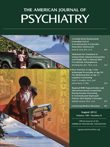Out of a wide range of both pharmacological and psychosocial interventions for substance use disorders in adolescents comes a potentially valuable piece of the treatment puzzle, a piece that can be found among the many over-the-counter supplements in drug and grocery stores. The potential value of
N-acetylcysteine (NAC), an inexpensive supplement, is somewhat reassuring given the increasing concern about the misuse and abuse of prescription and over-the-counter drugs by adolescents (
1). Gray and colleagues (
2) report in this issue an 8-week double-blind randomized placebo-controlled trial, in which 116 cannabis-dependent adolescents ages 15–21 received NAC or placebo twice daily, each added to a contingency management intervention and brief weekly cessation counseling. Adolescents receiving NAC had more than twice the odds, when compared with placebo participants, of having negative urine cannabinoid tests during treatment. As the authors note, this is the first well-controlled pharmacotherapy study for cannabis dependence to show a positive primary cessation outcome (as opposed to decreased use) in an intent-to-treat analysis. In a previous open-label study of NAC in 24 dependent marijuana users by Gray and colleagues (
3), users reported reductions in days per week of use and “number of hits,” but urine cannabinoid measures did not significantly change over the treatment period. In addition to decreased overall use, reductions in reported compulsivity, emotionality, and purposefulness regarding marijuana use were reported, reflecting an improvement in three of the four domains of the Marijuana Craving Questionnaire.
Although medications for adults with substance use disorders have shown positive outcomes in terms of decreased use and increased abstinence and have been used in populations such as those with comorbid psychopathology (
4), the few studies completed in adolescents have not been as rewarding. This paucity of positive efficacy is particularly true for cannabis dependence, hence the importance of this study and its results. Unfortunately, existing psychosocial interventions have resulted in low abstinence rates and continued progression of substance use and related problems into adulthood. Although evidence-based psychosocial interventions, such as cognitive-behavioral therapies and family therapies, have advanced our approach to treating adolescents with substance use disorders (
5,
6), the use of medication for adolescents to augment these interventions lags considerably behind the development of pharmacotherapies for adults.
Researchers have looked at a number of possible targets for substance use disorder pharmacotherapy, including replacement therapy, attenuating reinforcement and reward pathways, and treatment of comorbid psychopathology. They have tested a number of agents already approved by the Food and Drug Administration for indications other than substance use disorder. Evidently, investigators need look only as far as the supplement section of their local grocery store or pharmacy to find NAC. Although it has been used for several decades, its use has more recently expanded to target psychiatric disorders as varied as schizophrenia, obsessive-compulsive disorder, bipolar disorder, deliberate self-injurious behaviors, and now the addictions or substance use disorders. Such wide-ranging use suggests its effect on a more general mechanism of psychopathology. Although research has identified glutamate as having an important role in development and maintenance of addiction, up-regulation of the cysteine-glutamate exchanger resulting from NAC administration may have benefits throughout the brain (
7). In addition to having effects on neurotransmission, NAC has been shown to have anti-inflammatory properties that are linked to oxidative pathways, a role in oxidative homeostasis where NAC results in increased plasma cysteine levels, ultimately leading to increases in brain glutathione (
7,
8). Each of these potential mechanisms suggests a role in the treatment of substance use disorders, although the mechanism may be more nonspecific in the case of substance use disorders.
While it is tempting to now think of NAC as another potential daily supplement for “good health,” like its neighbors on the shelves of the vitamin/supplement section of many stores, we have more work to do in considering NAC's place as a modality in the treatment of substance use disorders in adolescents. Does NAC work to prevent the development of substance use disorders? Does NAC work in longer-term therapy to prevent relapse? Does it work for problems with other drugs or more severe levels of substance use disorder? What are the adjunctive effects with other psychosocial treatment modalities or combinations? The last issue is particularly important as many may be tempted to use NAC as a single, individual treatment, a strategy discouraged by Gray et al. Despite the potential value of NAC and other pharmacotherapies for adolescents with cannabis and other substance use disorders, there is no evidence that any pharmacotherapies are efficacious for adolescents without concurrent psychosocial treatment (
9). However, much of the treatment for substance use disorders in adolescents involves targeting the often multiple problems that are reflected in the high number of psychosocial risk factors for the development of substance use disorders. The magnitude of these problems and the often limited resources of treatment providers are factors in the high incidence of relapse seen in youth (
6). By the time many adolescents receive treatment, the addictive process is well under way in this vulnerable population. The need to act successfully to abort or mitigate the development of substance dependence before it gets a head start suggests perhaps the most compelling question: “Does NAC work to prevent the development of substance use disorders?” Given the safety, affordability, and potential efficacy of NAC, a supplement to ward off addiction or other psychiatric disorders may not be an unreasonable idea. The serious epidemic of marijuana abuse in adolescents certainly mandates that we look at every possible option for their treatment.

